By Fr. Pietro Magliozzi
THE EXTRAORDINARY ASSEMBLY OF THE INTERNATIONAL LAY CAMILLIAN FAMILY, a step forward of hope for the Camillian laity
Rome, 14-19 October 2018
The house of the Handmaidens of the Incarnation of Villa Primavera in Rome hosted this international meeting of the LCF which, surprisingly, witnessed the presence of 25 nations (some for the first time, for example Pakistan and New Zealand), with 62 representatives (27 spiritual assistants and 35 presidents and lay people). Figures were present who gave an enhanced profile to the meeting, such as the former Superior Generals Angelo Brusco and Frank Monks, two former international presidents of the LCF, Isabel Calderon and Rosabianca Carpene, and three Camillian Provincial Superiors: Fr. Eduardo Morante (Peru), Fr. Rosario Messina (Sicily and Naples) and Fr. Alfred György (Austria, Hungary). Also present were Fr. Jesus Ruiz, the former international head of the LCF, and two current animators of the international LCF: Fr. Laurent Zoungrana and Marie Christine Brocherieux, with all of the general committee of the LCF (Maria Bako, Giosuè Sparaccino and Anita Ennis).
The participants, after arriving in the evening of 13 October, began to get to know each other and on 14 October they went to St. Peter’s Square to take part in the canonisation of seven saints, amongst whom stood out Pope Paul VI and Msgr. Oscar Arnulfo Romero. A lunch and a visit to the mother Church of St. Mary Magdalene gave a Camillian touch with which to begin all the deliberations of the meeting in the right spirit.
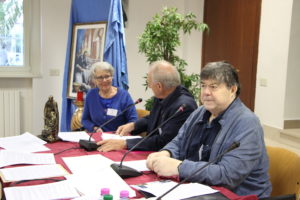 On Monday 15 October the Superior General Leo Pessini, even though he had been admitted to hospital for 43 days and was sorely tested by the ‘frailty of human nature’, managed to take part in the beginning of the deliberations as envisaged by the programme. He welcomed those taking part and concentrated on three concepts: 1-Pentecost: creating communion in diversity; 2-discernment: knowing how to create silence in order to internalise the contents of the deliberations and make the most suitable choices to take the right decisions; 3-the future: always seeing it with hope in every choice that is made.
On Monday 15 October the Superior General Leo Pessini, even though he had been admitted to hospital for 43 days and was sorely tested by the ‘frailty of human nature’, managed to take part in the beginning of the deliberations as envisaged by the programme. He welcomed those taking part and concentrated on three concepts: 1-Pentecost: creating communion in diversity; 2-discernment: knowing how to create silence in order to internalise the contents of the deliberations and make the most suitable choices to take the right decisions; 3-the future: always seeing it with hope in every choice that is made.
Arnaldo Pangrazzi, with his usual verve, chaired the meeting and introduced all of those taking part. In his introduction, he presented the identity of the lay people of the LCF as the bearers of our charism to the fringes of the world and the face of presence and hope at the side of those who suffer and a model of the Good Samaritan.
The first paper to be given was that of Fr. Leo Pessini, who has been the Superior General of the Camillian Religious since the year 2014. Its title was ‘Called to Holiness in my Reality: Pope Francis and the Exhortation Gaudete et exsultate’. After introducing the concept of holiness as ‘knowing how to do ordinary things in an extraordinary way embodying an aspect of the Gospel’, Fr. Leo went on to comment on the eight beatitudes because saints know how to bear witness to these approaches by embodying them in their lives. As regards these beatitudes, his comments on the beatitude linked to tears and on the beatitude linked to persecution were original. ‘Certain mysterious realities’, said Fr. Leo, ‘are only seen when your eyes are washed by tears’; knowing how to defend the Church against persecution by calumny and falsehood with St. Michael the Archangel is a beatitude that is as relevant as ever. The subsequent dialogue about this paper ended with the concept that blessedness or holiness is living happiness and creativity notwithstanding everything or, as St. Teresa of Calcutta said, ‘seeing deeply the positive that other people do not see’.
READ HERE THE MESSAGE OF THE SUPERIOR GENERAL
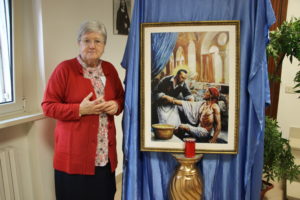 The second paper of Monday was given by Rosa Bianca Carpene, a ‘Christ Our Hope’ missionary woman and a former president of the international LCF. Its title was ‘The Lay Vocation and the Camillian Charism’. An excursus was engaged in from the lay vocation in general to the Camillian lay vocation and on to the vocation of the Lay Camillian Family. A Christian lay believer is a presence and a sign of belonging to the ‘holy people of God’ and this involves everyone because we all enter the Church as lay people through baptism. Charity distinguishes us more strongly as lay people in the Camillian charism through a ‘complete’ service to sick people and with a vision of sick people as a ‘setting for the mercy of God’. To live this Camillian lay vocation of integral and mystic charity, a specific formation is required. The group work (carried out in language groups) reflected upon the meaning of being a lay Camillian family today in the world and in the Church. For many of those present, it was evident that Camillus today would have gone to the fringes and favoured the last with an outlook and a creativity similar to Samaritan charity.
The second paper of Monday was given by Rosa Bianca Carpene, a ‘Christ Our Hope’ missionary woman and a former president of the international LCF. Its title was ‘The Lay Vocation and the Camillian Charism’. An excursus was engaged in from the lay vocation in general to the Camillian lay vocation and on to the vocation of the Lay Camillian Family. A Christian lay believer is a presence and a sign of belonging to the ‘holy people of God’ and this involves everyone because we all enter the Church as lay people through baptism. Charity distinguishes us more strongly as lay people in the Camillian charism through a ‘complete’ service to sick people and with a vision of sick people as a ‘setting for the mercy of God’. To live this Camillian lay vocation of integral and mystic charity, a specific formation is required. The group work (carried out in language groups) reflected upon the meaning of being a lay Camillian family today in the world and in the Church. For many of those present, it was evident that Camillus today would have gone to the fringes and favoured the last with an outlook and a creativity similar to Samaritan charity.
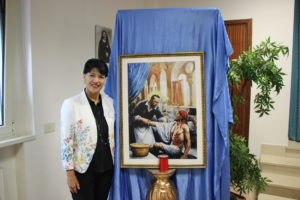 The next paper was given by Lucy Maldonado, a nurse and a member of the LCF of Ecuador. Ut was on ‘The Camillian Charism in Hospices and Palliative Care’. The epidemiological data demonstrate the need to work in this field: 10.9 million of new cases of cancer every year; 80% of them diagnosed at an advanced stage; and 60 million people a year either dying or living in physical suffering and not having access either to pain treatment or to accompanying. For this reason, the WHO wrote that every individual must have the right to palliative care. The Hospice of Quito (FECUPAL), which was created in 2014 and has hitherto helped 92 people, is an answer to this need. It is not a matter, as Fr. Alberto Redaeilli the founder of this hospice observed, of helping people to die well but, rather, of enabling people to live fully until the last moment of their lives, which are a gift of God, using everything that is available (words, hands, looks, smiles, tone of voice) in the same way as St. Camillus went so far as to kiss the hands, the feet and the sores of his patents. Fr. Pangrazzi summarised this paper with a phrase that calls on all people to engage in a great work of sensitisation: ‘men of the West live as though they are never going to die and die as if they had never lived’. The work carried out by the language groups was very profound and the focus during the plenary was on how to accompany non-believers. Fr. Brusco observed that the goal of St. Camillus was always, for believers and non-believers alike, ‘salvation’, but given in a personalised and appropriate way.
The next paper was given by Lucy Maldonado, a nurse and a member of the LCF of Ecuador. Ut was on ‘The Camillian Charism in Hospices and Palliative Care’. The epidemiological data demonstrate the need to work in this field: 10.9 million of new cases of cancer every year; 80% of them diagnosed at an advanced stage; and 60 million people a year either dying or living in physical suffering and not having access either to pain treatment or to accompanying. For this reason, the WHO wrote that every individual must have the right to palliative care. The Hospice of Quito (FECUPAL), which was created in 2014 and has hitherto helped 92 people, is an answer to this need. It is not a matter, as Fr. Alberto Redaeilli the founder of this hospice observed, of helping people to die well but, rather, of enabling people to live fully until the last moment of their lives, which are a gift of God, using everything that is available (words, hands, looks, smiles, tone of voice) in the same way as St. Camillus went so far as to kiss the hands, the feet and the sores of his patents. Fr. Pangrazzi summarised this paper with a phrase that calls on all people to engage in a great work of sensitisation: ‘men of the West live as though they are never going to die and die as if they had never lived’. The work carried out by the language groups was very profound and the focus during the plenary was on how to accompany non-believers. Fr. Brusco observed that the goal of St. Camillus was always, for believers and non-believers alike, ‘salvation’, but given in a personalised and appropriate way.
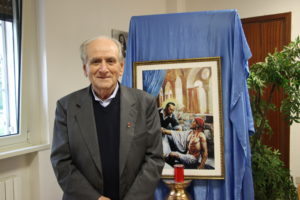 On Tuesday 16 October, the second day of the assembly, the deliberations were begun by Fr. Angelo Brusco, the Superior General between 1989 and 2001. His paper was on ‘The Relationship of the LCF with the Order of Camillians and with the Church’. Beginning with a history of the role of the laity in the official documents of the Order of Camillians, he reached as far as the statutes of the LCF of 2001. Fr. Brusco demonstrated how the point of discussion hitherto has always been the relationship between Camillian religious and lay people: cooperation involving a journey of growth over time and a growing synergy or reciprocity between Camillian religious and lay people in giving and receiving, in exchanging opinions and projects, in fraternity and in mutual enrichment. In the work of the language groups there was agreement on the fact that in recent times there has been a shift from an explicit or implicit opposition between religious and lay people to respect, help and reciprocal readiness to help, but a valuing and active recognition of lay people by the religious had not yet been achieved. There are some religious who value the LCF very highly and contribute to its growth. Yet there are others who still have a clericalist and individualist approach towards lay people and keep their distance from them. From the Americas there emerged the original idea of regionalising the LCF by appointing an animator who could animate the national LCFs and foster communication between them and between them and a central committee, all of this with the aim of making the LCF of America grow and develop more quickly. It was observed that in South America alone the LCF has more than 650 trained members. Fr. Brusco ended by inviting those present to attempt to form a Camillian Youth Organisation which could offer experiences rich in humanity, albeit foregoing continuity in such work.
On Tuesday 16 October, the second day of the assembly, the deliberations were begun by Fr. Angelo Brusco, the Superior General between 1989 and 2001. His paper was on ‘The Relationship of the LCF with the Order of Camillians and with the Church’. Beginning with a history of the role of the laity in the official documents of the Order of Camillians, he reached as far as the statutes of the LCF of 2001. Fr. Brusco demonstrated how the point of discussion hitherto has always been the relationship between Camillian religious and lay people: cooperation involving a journey of growth over time and a growing synergy or reciprocity between Camillian religious and lay people in giving and receiving, in exchanging opinions and projects, in fraternity and in mutual enrichment. In the work of the language groups there was agreement on the fact that in recent times there has been a shift from an explicit or implicit opposition between religious and lay people to respect, help and reciprocal readiness to help, but a valuing and active recognition of lay people by the religious had not yet been achieved. There are some religious who value the LCF very highly and contribute to its growth. Yet there are others who still have a clericalist and individualist approach towards lay people and keep their distance from them. From the Americas there emerged the original idea of regionalising the LCF by appointing an animator who could animate the national LCFs and foster communication between them and between them and a central committee, all of this with the aim of making the LCF of America grow and develop more quickly. It was observed that in South America alone the LCF has more than 650 trained members. Fr. Brusco ended by inviting those present to attempt to form a Camillian Youth Organisation which could offer experiences rich in humanity, albeit foregoing continuity in such work.
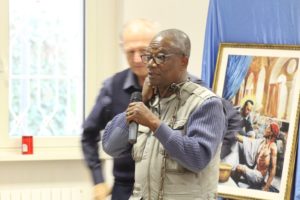 At this point the testimonies began of some members of the LCF who were present: Mary del Kenia spoke first and she was followed by Daisy del Brasil.
At this point the testimonies began of some members of the LCF who were present: Mary del Kenia spoke first and she was followed by Daisy del Brasil.
In the afternoon of the second day the lay representative Gregoire Ahongbonon, the father of a family and a car mechanic from the Ivory Coast, and today a lay person aggregated to the Order of Camillian who has founded in Togo, Benin, the Ivory Coast and Burkina Faso tens of centres based on Camillian spirituality for mentally ill people, gave a talk. He is a simple man who only asks for prayers for himself, aware that everything he has done is a gift of God and inspired by God. Gregoire defines himself as a ‘Jesus amongst the sick’. His paper was entitled ‘St. Camillus de Lellis, Mental Health and Reintegration from Social Exclusion’. Everything began, as always, after an existential crisis when Gregoire received in 1982 the grace to go to Jerusalem where he felt his vocation to serve the poor in prisons, then street orphans, then lepers and in 2010 the mentally ill, who have been his specific concern ever since. Gregoire hosts about 250 people and helps them by buying medical products and then restoring to them a name, dignity, love, a job, freedom (because in their countries they chain them up to a tree or put them in cages) and, above all else, having them recover their faith in a God who has continued to love them (when they own parents had abandoned them). For this reason, Gregoire has received a great deal of help and recognition from the Camillians and from international organisations and he is constantly asked to speak to psychiatrists and volunteer associations in Europe and Africa. Fr. Monks and Fr. Messina told touching stories in which one could see the faith and the courage of this man who on his own has performed miracles of charity. The most surprising thing that Gregoire teaches the world of psychiatry is that 70% of the patients that he receives in his centres go back to their families; today, 60,000 people who have been in his centres are leading normal lives and have jobs – naturally, they go on taking their drugs and medicines. What is Gregoire’s secret and what is his treatment? Medical products, love and trust in patients, without being afraid of these people and chaining them up. Gregoire restores hope to these kinds of patients whom nobody knows how to treat, humanly speaking; patients who represent the epidemic of the twenty-first century, the most numerous and the most difficult to treat. As regards relapses, Gregoire proposes a meeting every Saturday with them for the purposes of health-care education, a moment of spiritual retreat, and he concentrates from the outset on strong work with their families who constitute a primary cause of their condition.
 Sister Riccarda Lazzari, a woman Minister of the Sick, was the first speaker of the third day, Wednesday 17 October. The subject of her paper was ‘Our Lady, Health of the Sick, in my Life as a Camillian Lay Person’. Her paper touched upon the greatest profundity of the theological mystery of Mary. At the outset she described the new Mariology, which is more Christological and ecclesiological (salvation comes through Jesus and Jesus comes through Mary) than it previously was when it was more devotionalist and made up of the autonomous pure privileges of Mary. Sr. Riccarda then laid emphasis on the subject of the ‘mystery of salvation’ which understands us and is not understood or understood by me: a mystery represented by the silence of Mary and which is an itinerary of five stages in the life of Mary – the Annunciation, the Visitation, Christmas, Cana, and the Cross. A theological meaning was demonstrated in each of these stages, an event of grace for the life of a Christian, in addition to a meaning for the world of health and for each lay or religious Camillian. The Annunciation teaches me to feel myself personally called to give life and health to the world. The Visitation teaches me the diakonia of charity towards the sick. Christmas teaches me to see life as a love story, as the acceptance of a gift. Cana teaches me compassion, care and concern for the sick and their family relatives. The Cross teaches me silent, dignified and solemn silence, knowing how to stop at the side of people who experience Good Friday knowing that Easter will follow. Her paper than turned to the subject of the ‘woman’ reflected in Mary and the female genius with all of its virtues (not forgetting St. Joseph at her side) and ended with Mary the Mother of hope and source of comfort, a very beautiful phrase of the Mystery of salvation. In the questions that followed the importance was emphasised of not stopping at classic devotionalism towards Mary, or notionistic knowledge, but of entering Mystery with her and then praying to this Mystery, reaching intelligence of Mystery and giving abundant space to it in our lives.
Sister Riccarda Lazzari, a woman Minister of the Sick, was the first speaker of the third day, Wednesday 17 October. The subject of her paper was ‘Our Lady, Health of the Sick, in my Life as a Camillian Lay Person’. Her paper touched upon the greatest profundity of the theological mystery of Mary. At the outset she described the new Mariology, which is more Christological and ecclesiological (salvation comes through Jesus and Jesus comes through Mary) than it previously was when it was more devotionalist and made up of the autonomous pure privileges of Mary. Sr. Riccarda then laid emphasis on the subject of the ‘mystery of salvation’ which understands us and is not understood or understood by me: a mystery represented by the silence of Mary and which is an itinerary of five stages in the life of Mary – the Annunciation, the Visitation, Christmas, Cana, and the Cross. A theological meaning was demonstrated in each of these stages, an event of grace for the life of a Christian, in addition to a meaning for the world of health and for each lay or religious Camillian. The Annunciation teaches me to feel myself personally called to give life and health to the world. The Visitation teaches me the diakonia of charity towards the sick. Christmas teaches me to see life as a love story, as the acceptance of a gift. Cana teaches me compassion, care and concern for the sick and their family relatives. The Cross teaches me silent, dignified and solemn silence, knowing how to stop at the side of people who experience Good Friday knowing that Easter will follow. Her paper than turned to the subject of the ‘woman’ reflected in Mary and the female genius with all of its virtues (not forgetting St. Joseph at her side) and ended with Mary the Mother of hope and source of comfort, a very beautiful phrase of the Mystery of salvation. In the questions that followed the importance was emphasised of not stopping at classic devotionalism towards Mary, or notionistic knowledge, but of entering Mystery with her and then praying to this Mystery, reaching intelligence of Mystery and giving abundant space to it in our lives.
The testimonies that followed were those of Angela from Austria; Rebert, an accountant from Haiti; Magda of Peru; Guillermina of Tanzania; Veronica, a nurse from Chile; Michel, a social worker from Australia; and Laurent, a doctor from Burkina Faso.
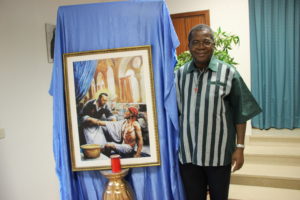 Laurent Zoungrana, the Vicar General of the Order and the International Assistant of the LCF, gave a paper entitled ‘Being a Camillian and a Samaritan in Today’s World’. Fr. Laurent began his paper on the identity of being Camillians which involves fully living our charism. He then engaged in a patristic commentary on the parable of the Good Samaritan. He applied this to Camillus and then to Camillian lay people as witnesses to the merciful love of God and promoters of health. With a happy comparison he portrayed the ‘inn’ as the Church, ‘a clinic of sick people and not a circle of perfect people’ (as the Pope says), and the ‘innkeeper’ as the Camillians who with skill attend to the sick man. The ‘Good Samaritan’ is Jesus and the ‘two pieces of silver’ that he left behind him are the sacraments and holy scripture offered by the Church. Fr. Pangrazzi added further contents to the paper of the speaker that showed how the parable is still open and calls on us as regards many other elements, posing many questions to us about our way of looking after the sick. The questions of the assembly emphasised the risks and the dangers of assisting certain categories of sick people and the answer was that the fourth vow invites us to launch ourselves further and not to be afraid of serving sick people in need, always and everywhere, even unto death.
Laurent Zoungrana, the Vicar General of the Order and the International Assistant of the LCF, gave a paper entitled ‘Being a Camillian and a Samaritan in Today’s World’. Fr. Laurent began his paper on the identity of being Camillians which involves fully living our charism. He then engaged in a patristic commentary on the parable of the Good Samaritan. He applied this to Camillus and then to Camillian lay people as witnesses to the merciful love of God and promoters of health. With a happy comparison he portrayed the ‘inn’ as the Church, ‘a clinic of sick people and not a circle of perfect people’ (as the Pope says), and the ‘innkeeper’ as the Camillians who with skill attend to the sick man. The ‘Good Samaritan’ is Jesus and the ‘two pieces of silver’ that he left behind him are the sacraments and holy scripture offered by the Church. Fr. Pangrazzi added further contents to the paper of the speaker that showed how the parable is still open and calls on us as regards many other elements, posing many questions to us about our way of looking after the sick. The questions of the assembly emphasised the risks and the dangers of assisting certain categories of sick people and the answer was that the fourth vow invites us to launch ourselves further and not to be afraid of serving sick people in need, always and everywhere, even unto death.
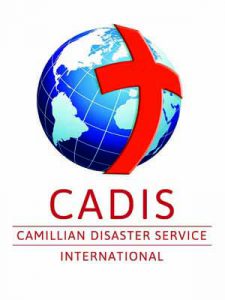 Aris Miranda, a member of the General Consulta, with Emilia and Fr. Manuel Zongo, a Camillian religious from Burkina Faso, all leaders of CADIS (the International Camillian Disaster Service), provided a very fine summary of the work done in relation collective disasters starting in the year 2000 (with the CTF) and in 2015 (with CADIS): in Indonesia, India, Pakistan, Haiti, Nepal, Sierra Leone, Kenya and Austria. Over the last twenty years, the UN has registered four billion people as being wounded by collective disasters and the data are even more dramatic in poor countries – a sign of flagrant injustice. Hitherto CADIS has worked with 1,500 volunteers (many more lay people than religious) and has helped 130,000 victims of disasters. The questions of the group were very many in number and pointed to a Camillian institution that begins with material help (10,000 euros to leave) and then moves on to psycho-social-spiritual accompanying which is very much appreciated by Caritas International (on which the Camillians of Tres Cantos in Spain are writing a book) and by dioceses that are victims of disasters, indeed, even by Muslims (in Pakistan). The other originality of CADIS is its long-term programme to restore resilience to entire communities that are the victims of disasters. A few months are not sufficient to enable a community to recover – longer periods are required and in this way communities are helped to face up to future disasters. On this point a bishop of Haiti said that he had never seen a community that was so strong, resilient and full of ties of solidarity as that which had received help from the initiative of CADIS. Fr. Aris ended his paper by inviting those present to publicise this fully Camillian work and he invited each person at the meeting to take part with their skills in having in each Camillian Province a basic training on traumas, as the Provinces of India and the Philippines already do. In the case of a disaster in Indonesia where an Irish bishop had materially helped the victims of the tragedy and then went personally to see the results of his help, he testified that the most effective programme of them all was that of the Camillians because they worked at the side of the victims and because they knew how to coordinate all the other initiatives.
Aris Miranda, a member of the General Consulta, with Emilia and Fr. Manuel Zongo, a Camillian religious from Burkina Faso, all leaders of CADIS (the International Camillian Disaster Service), provided a very fine summary of the work done in relation collective disasters starting in the year 2000 (with the CTF) and in 2015 (with CADIS): in Indonesia, India, Pakistan, Haiti, Nepal, Sierra Leone, Kenya and Austria. Over the last twenty years, the UN has registered four billion people as being wounded by collective disasters and the data are even more dramatic in poor countries – a sign of flagrant injustice. Hitherto CADIS has worked with 1,500 volunteers (many more lay people than religious) and has helped 130,000 victims of disasters. The questions of the group were very many in number and pointed to a Camillian institution that begins with material help (10,000 euros to leave) and then moves on to psycho-social-spiritual accompanying which is very much appreciated by Caritas International (on which the Camillians of Tres Cantos in Spain are writing a book) and by dioceses that are victims of disasters, indeed, even by Muslims (in Pakistan). The other originality of CADIS is its long-term programme to restore resilience to entire communities that are the victims of disasters. A few months are not sufficient to enable a community to recover – longer periods are required and in this way communities are helped to face up to future disasters. On this point a bishop of Haiti said that he had never seen a community that was so strong, resilient and full of ties of solidarity as that which had received help from the initiative of CADIS. Fr. Aris ended his paper by inviting those present to publicise this fully Camillian work and he invited each person at the meeting to take part with their skills in having in each Camillian Province a basic training on traumas, as the Provinces of India and the Philippines already do. In the case of a disaster in Indonesia where an Irish bishop had materially helped the victims of the tragedy and then went personally to see the results of his help, he testified that the most effective programme of them all was that of the Camillians because they worked at the side of the victims and because they knew how to coordinate all the other initiatives.
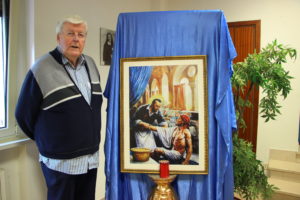 Frank Monks opened the deliberations of Thursday 18 October with a paper on ‘The Challenge of Living the Beatitudes in a Secular Society’. The former Superior General of the Order showed how secularism has advanced over the last thirty years in a head-spinning way in his country, Ireland, and for this reason being effective today in evangelising mission is very different from exercising a good ministry (according to the classic categories). We are face to face with a crisis of faith (young people see the Catholic faith as a foreign language) and a future of uncertainty (a pluralism of hundreds of religions and forms of spirituality) which calls on us. Abortion is much more that a debate about life: it directs attention to where the moral choices of an individual and his freedom are born, the meaning of religious and moral authority, and obedience or otherwise to this authority. In the Church there are various kinds of Catholics (practising, emotional and nominal Catholics and Catholics hostile to Christianity) and consistent practising Catholics are a very small minority. What attitude should we adopt towards this situation of secularism? First, as pilgrims on a search, moving forward, in dialogue and listening to the choices of other people, and, second, in a state of continuous conversion where I choose to remain in this Church and this Order, both of which are sinners and saints, continuing to hope and to live charity, independently of the effects on other people, who are faithful to their own consciences. Whether we want it or not, we must go towards the future, looking at the positive side of this situation, seeing it as an opportunity, believing that in a secularist society that even calls the existence of God into question our witness to Camillian charity is an even more luminous sign. Being what we are as Camillians strikes everyone, non-believers as well. One no longer starts from imposing prayer or invading the territory that is not ours but of demonstrating the fruits of our charity and feeling the privilege of being at the side of the sick. The story of the case of the conversion of a girl who had entered a sect demonstrated that what converted her was visiting the sick.
Frank Monks opened the deliberations of Thursday 18 October with a paper on ‘The Challenge of Living the Beatitudes in a Secular Society’. The former Superior General of the Order showed how secularism has advanced over the last thirty years in a head-spinning way in his country, Ireland, and for this reason being effective today in evangelising mission is very different from exercising a good ministry (according to the classic categories). We are face to face with a crisis of faith (young people see the Catholic faith as a foreign language) and a future of uncertainty (a pluralism of hundreds of religions and forms of spirituality) which calls on us. Abortion is much more that a debate about life: it directs attention to where the moral choices of an individual and his freedom are born, the meaning of religious and moral authority, and obedience or otherwise to this authority. In the Church there are various kinds of Catholics (practising, emotional and nominal Catholics and Catholics hostile to Christianity) and consistent practising Catholics are a very small minority. What attitude should we adopt towards this situation of secularism? First, as pilgrims on a search, moving forward, in dialogue and listening to the choices of other people, and, second, in a state of continuous conversion where I choose to remain in this Church and this Order, both of which are sinners and saints, continuing to hope and to live charity, independently of the effects on other people, who are faithful to their own consciences. Whether we want it or not, we must go towards the future, looking at the positive side of this situation, seeing it as an opportunity, believing that in a secularist society that even calls the existence of God into question our witness to Camillian charity is an even more luminous sign. Being what we are as Camillians strikes everyone, non-believers as well. One no longer starts from imposing prayer or invading the territory that is not ours but of demonstrating the fruits of our charity and feeling the privilege of being at the side of the sick. The story of the case of the conversion of a girl who had entered a sect demonstrated that what converted her was visiting the sick.
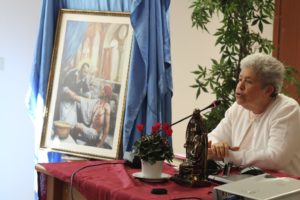 A number of participants then gave testimonies of their experiences of Camillian life: Michelle of the United States of America, Giosuè Sparaccino of the Province of Sicily and Naples, Fr. Mashtak of Pakistan, who has been assigned to Indonesia, the representative of Benin and of Kenya, and then Ruby of the Philippines and Asia of Pakistan.
A number of participants then gave testimonies of their experiences of Camillian life: Michelle of the United States of America, Giosuè Sparaccino of the Province of Sicily and Naples, Fr. Mashtak of Pakistan, who has been assigned to Indonesia, the representative of Benin and of Kenya, and then Ruby of the Philippines and Asia of Pakistan.
The next paper was given by Isabel Calderon, the first international president of the LCF. It was entitled ‘Living the Camillian Charism with Faithfulness and Creativity’. After beginning from her vocational experience and how she had met the Camillians through a crisis (an element common to all those participants who gave their testimonies), she demonstrated what for her are the eleven principal challenges for the Camillian charism in the world of health and health care today. The first is choosing where to invest most forces, in hospitals or homes; the second is training in pastoral care in health; the third is the promotion of vocations to Camillian voluntary work; the fourth is palliative care; the fifth is how to multiply centres for listening to people and relationships of help in a world of increasingly painful loneliness; the six is how to accompany death and mourning; the seventh is the humanisation of health centres; the eighth is how to help family relatives and health-care workers with ecumenical units of spiritual accompanying in hospitals; the ninth is choosing preferential options for those who are most excluded in a throwaway society; the tenth is the pedagogics of health (promotion and prevention); and the last is collective emergencies. Isabel said that this list does not cover all the needs that exist but it demonstrates how much our charism is rich and full of areas of work that should be developed. One contribution from the floor related the miraculous story of Camillian accompanying carried out with love for a patient with Alzheimer’s disease in Palermo: a twelfth challenge of today’s world.
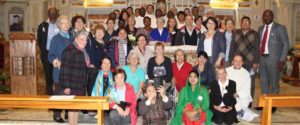 The next testimonies were given by Witold Ryka of Poland and Fr. Denis of New Zealand. The meeting ended with a general assembly to draw up a message of the members of the assembly to the Order, to engage in a final assessment of the meeting, and to move forward to the next international assembly which will be held in 2021 in Mottinello in North Italy. This next meeting will be preceded by a preparatory meeting in Rome of the major Superiors with the presidents of the various branches of the LCF in the year 2020. Marie Christine Brocherieux, Maria Bako, Giosuè Sparaccino, Anita Ennis and Fr. Laurent Zoungrana expressed their thanks and gave some explanations.
The next testimonies were given by Witold Ryka of Poland and Fr. Denis of New Zealand. The meeting ended with a general assembly to draw up a message of the members of the assembly to the Order, to engage in a final assessment of the meeting, and to move forward to the next international assembly which will be held in 2021 in Mottinello in North Italy. This next meeting will be preceded by a preparatory meeting in Rome of the major Superiors with the presidents of the various branches of the LCF in the year 2020. Marie Christine Brocherieux, Maria Bako, Giosuè Sparaccino, Anita Ennis and Fr. Laurent Zoungrana expressed their thanks and gave some explanations.
On Friday 19 October the group went on a pilgrimage to Bucchianico and Manoppello and took part in a Holy Mass celebrated by Fr. Zoungrana. They had a very good lunch at the Nicola D’Onofrio Institute of Bucchianico and spent a wonderful day full of Camillian spirituality. On Saturday 20 October the participants said goodbye to each other in the morning before returning to their respective centres of apostolate.
The meeting was an integration of spiritual moments (morning prayers, Holy Mass in the afternoon where the various languages used alternated with one another and were joined), moments of formation and updating, and relational moments of sharing that gave a great deal of room to spontaneity and moments for meals and rest. They made these six days a meaningful and very enriching experience that will provide hope amidst the strength and freedom of the laity today. These six days were an intense experience that meant that the 62 participants would return with new energy to their settings and challenges of daily life to construct a world of the freedom and truth of love, a world where the mysticism of Camillian charity is present, a more human world of health and health care.



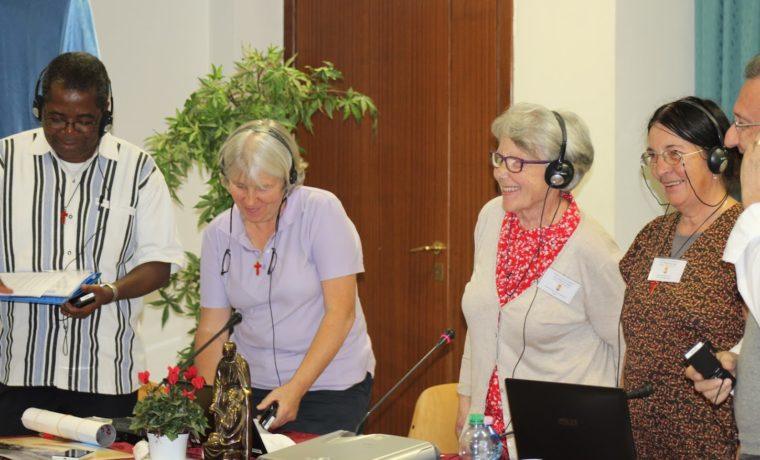
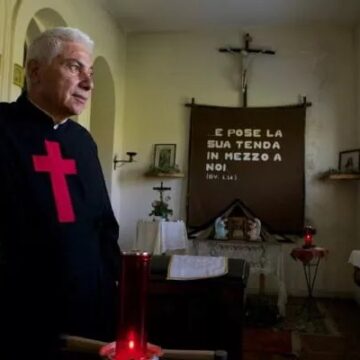

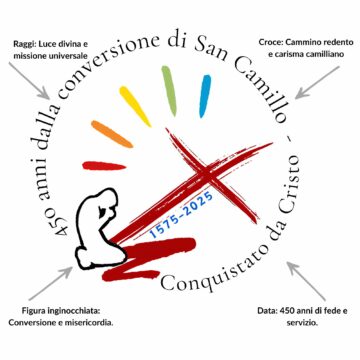


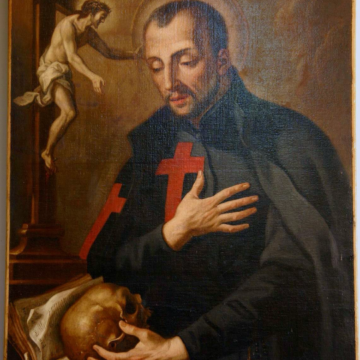
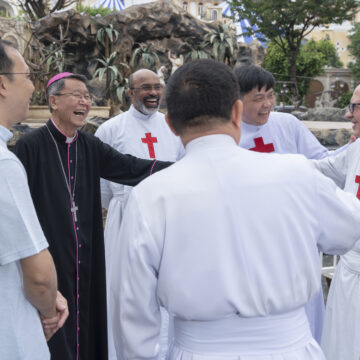

Camillians on Facebook
Camillians on Twitter
Camillians on Instagram